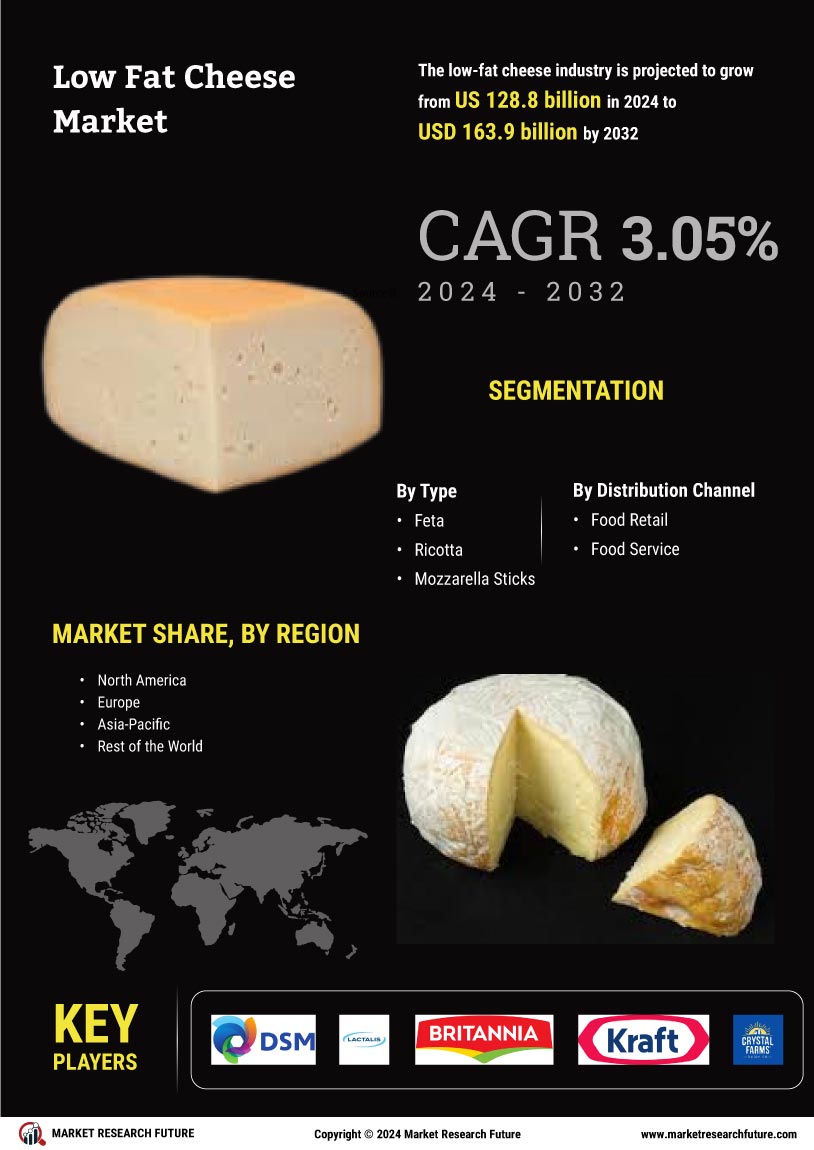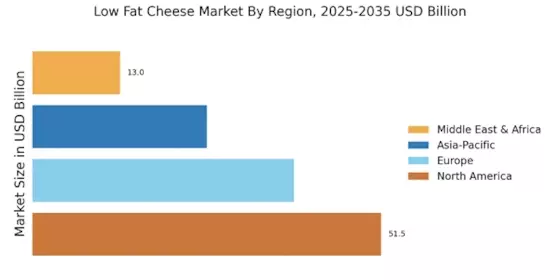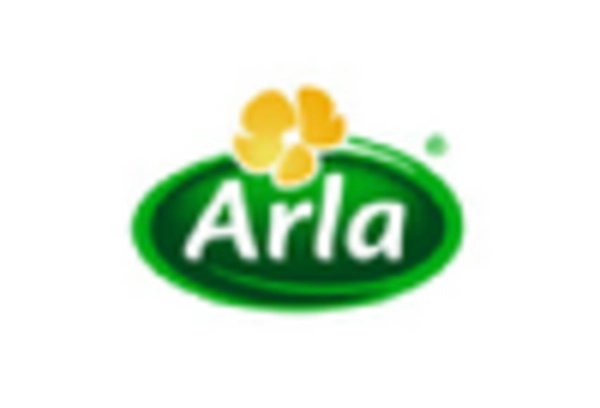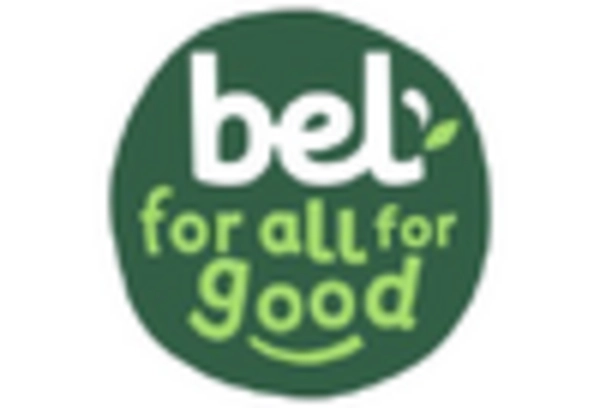Innovative Product Development
Innovation in product development is a crucial factor influencing the Low Fat Cheese Market. Manufacturers are increasingly focusing on creating diverse and appealing low fat cheese options to attract a broader consumer base. This includes the introduction of unique flavors, textures, and packaging that enhance the overall consumer experience. Recent market data suggests that the introduction of new flavors has led to a 25% increase in sales within the low fat cheese segment. As consumers seek variety in their diets, the Low Fat Cheese Market is likely to continue evolving, with companies investing in research and development to meet these changing preferences.
Health Awareness and Nutrition Focus
The increasing awareness regarding health and nutrition among consumers appears to be a primary driver for the Low Fat Cheese Market. As individuals become more conscious of their dietary choices, the demand for low fat alternatives has surged. According to recent data, approximately 60% of consumers actively seek low fat products, indicating a shift towards healthier eating habits. This trend is further supported by the rise in obesity rates and related health issues, prompting consumers to opt for low fat cheese as a healthier option. The Low Fat Cheese Market is thus witnessing a significant uptick in sales, as manufacturers respond to this demand by offering a variety of low fat cheese products that cater to health-conscious consumers.
Increased Availability in Retail Channels
The expansion of retail channels is another significant driver for the Low Fat Cheese Market. With the proliferation of supermarkets, health food stores, and online platforms, consumers now have greater access to low fat cheese products than ever before. Recent data shows that the availability of low fat cheese in retail outlets has increased by 40%, making it easier for consumers to find and purchase these products. This enhanced accessibility is likely to boost sales and encourage more consumers to incorporate low fat cheese into their diets. As a result, the Low Fat Cheese Market is poised for continued growth, driven by improved distribution and marketing strategies.
Rising Demand for Plant-Based Alternatives
The growing trend towards plant-based diets is significantly impacting the Low Fat Cheese Market. As more consumers adopt vegetarian and vegan lifestyles, the demand for plant-based low fat cheese alternatives is on the rise. Recent statistics indicate that the plant-based cheese market has expanded by over 30% in the last year, reflecting a shift in consumer preferences. This trend is likely to continue, as individuals seek healthier and more sustainable options. Consequently, the Low Fat Cheese Market is adapting by incorporating plant-based ingredients into their product lines, thereby appealing to a wider audience and addressing the needs of health-conscious consumers.
Influence of Dietary Guidelines and Recommendations
Dietary guidelines and recommendations from health organizations play a pivotal role in shaping consumer behavior within the Low Fat Cheese Market. As these organizations advocate for reduced fat intake and healthier eating patterns, consumers are more inclined to choose low fat cheese options. Recent surveys indicate that nearly 70% of consumers are influenced by dietary recommendations when making food choices. This trend suggests that the Low Fat Cheese Market will continue to benefit from increased consumer awareness and adherence to health guidelines. Consequently, manufacturers are likely to align their product offerings with these recommendations, further driving the growth of the low fat cheese segment.


















Leave a Comment